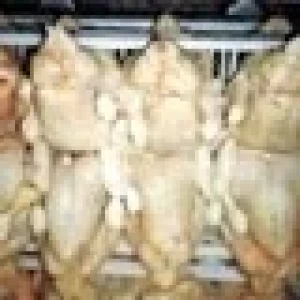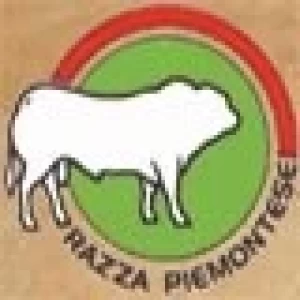TRACEABILITY: is there more to it than meets the eye?

Now that we have put behind us the discussion on whether or not traceability is acceptable to Latin American food industry stakeholders, it is time to look closer at the usefulness of the concept, beyond the obvious goal of ensuring that the consumer can find out from where his or her juicy steak comes.In order to understand the background for this discussion it is of interest to have a closer look at the issues at stake.As the livestock revolution inevitably moves forward and transforms a traditional way of life, food producers all over the world are grappling to find ways to respond to the changes. Fundamentally this means a new attitude to applied science; whereas until now scientists and farmers have lived separate lives, many farmers are now seen to actively seek scientific knowledge and become professionals in their particular field. Indeed, in some countries, one of them is Norway, this tendency is so much born out of a government drive to update and make more competitive, their farming communities that, subsidies will in the future be linked to some extent to the professional level of each farmer.Now that is a profound change that will have many consequences, chiefly among them will be the drive to apply new technology on an increasing scale. The bait to capture the attention of first the consumers and then the producers, will no doubt be the perceived enhanced safety of the food due to the application of one technology or another.Just how this will apply itself in the future is still very much an open question, but some very positive options are starting to emerge. Returning to traceability and its application in animal health issues represents a potential - and unintended - powerful tool to follow and sustain genetic improvement.A UK based company, RSSL –Reading Scientific Services Limited, is now marketing a genotyping a service that offers a much-improved way to ascertain paternity. The method, mainly consists of pulling some hair off animals and performing a DNA study of the hair follicles. Other DNA techniques can also be applied in other areas of interest to breeders, such as the control of GM ingredients in feed, and in identifying disease-related genes that farmers may wish to breed out of their stock, or beneficial genes that they want to breed in. DNA techniques are also having an increasingly important role to play in developing new drugs, by identifying the genetic traits that make some animals more responsive to some drug treatments than other animals. The results of appropriate DNA studies provide a means of tracing cattle through the supply chain and in determining the genetic "purity" of crossbred and pedigree animals, according to Dr Andrew Tingey who heads the molecular biology lab at RSSL, and this could have an impact on retailers decision to go ahead and try out the possibility of a full farm to fork traceability scheme, where individual animals can be traced back to their origin. Genetic improvementThis unintended but very useful application of the traceability technology has also been identified on the other side of the Atlantic, where Dr. R.L. Preston, Ph.D., Professor Emeritus of Texas Tech University works on the issue. Although he is sceptical to the claims that traceability per se will improve food safety, he does see the potential for food labelling (organic, natural, irradiated, etc), country of origin labelling, etc. Another aspect is the necessity for definitions, for legal opinions and court actions, and even the technology in tracing bio-terrorism.Dr. Preston sees the biggest potential in following genetic progress, where following genetic traits, one can for instance better control animal diseases and optimize animal production.Genetic benefit from traceability, he says, requires individual identification and proper records. Selection criteria can be clarified and genetic improvement quantified. Consider genetic improvement in milk production he says, and adds, that this may be the greatest benefit!Traceability and food safety“In the UK, in anticipation of statutory regulation and in response to commercial pressure, some trade bodies have taken the initiative in developing systems and procedures for ensuring the traceability of food products” says Dr. Ray Gibson of the RSSL. “For example, a partnership of European Sea Fish organizations is currently developing a voluntary electronic standard for traceability of fish products under the 'Tracefish' project. In the UK, since August 31st 2002, all food production facilities producing own label products for the UK retailers have been inspected against the 3rd issue of the British Retail Consortium (BRC) standard. The BRC standard has been reviewed in order to meet the requirements of the Global Food Safety Initiative, and provides a framework for establishing an effective and manageable traceability system.”Recalls“Leaving aside the legal requirements, arguably the most important benefit of an effective traceability system is that it provides the information that will enable the manufacturer to make a sensible and measured recall decision in response to a problem. Indeed, a good traceability system will minimize costs and limit the damage of any recall, since the problem products will be easier to identify. It will also help to identify the root cause of a problem, and perhaps to assign, legal liability can be assigned.”Traceability and due diligence“There is of course an inseparable link between traceability and ‘due diligence’. If a business cannot trace all activities, personnel and materials involved, then it may be difficult to demonstrate that the management is fully in control of the situation and able to prevent a recurrence of a food scare. The new Hygiene Directive which is due for implementation in 2005 aims to introduce a legal requirement for full traceability ‘from farm to fork’ although how this is to be enforced is not yet clear.” says Dr. Gibson.As far as UK food importers are concerned, they have no intention of going against what they see as a consumer driven change. General secretary of the International Meat Traders Association, UK, Mr. Chris Gadsden is very clear on that. He says that the members of his organization are committed to following legal requirements, adding that providing full traceability with individual animal ID, from fork to table, will become a reality – sooner rather than later.* Hanne Martine Stabursvik, Norwegian veterinary surgeon living and working in Argentina. Member of the Royal College of Veterinary Surgeons, UK. One of her specialties is the veterinary checks on imported products of animal origin in the EU. She teaches animal welfare at the Universidad del Salvador, Facultad de Medicina Veterinaria and works with specialists in the field from all over the world. She is also a member of Red Alimentaria.





